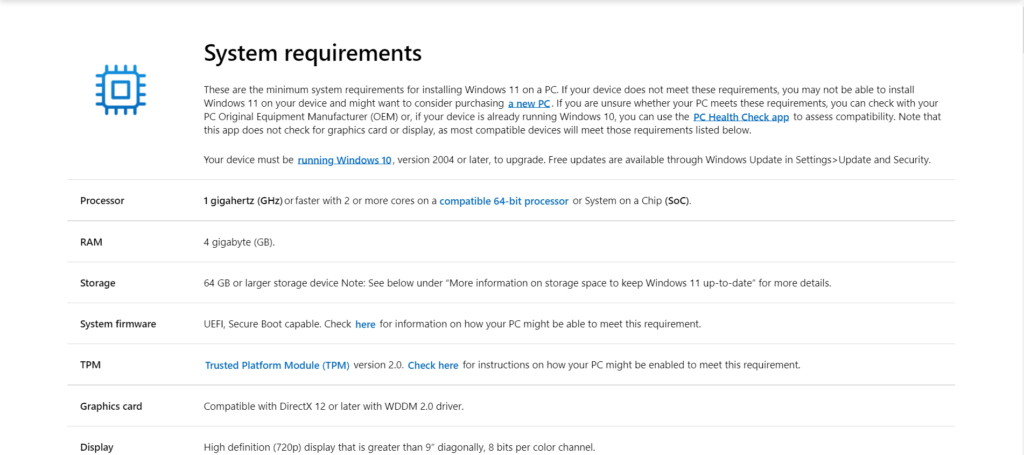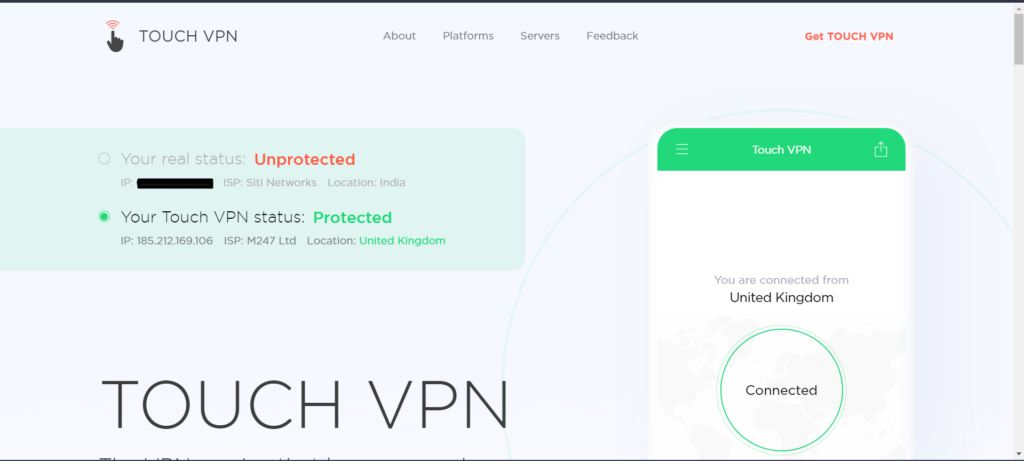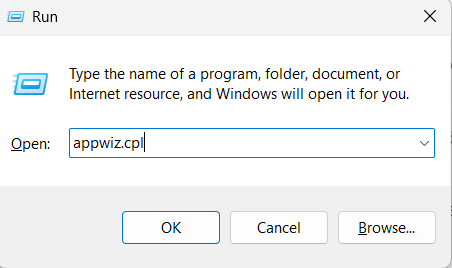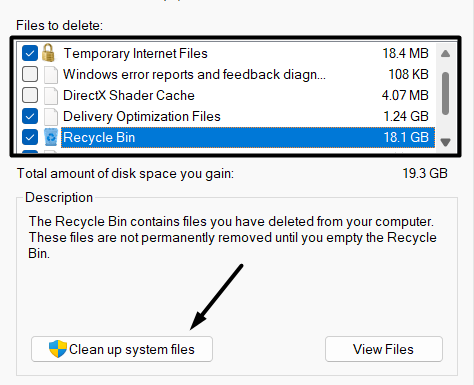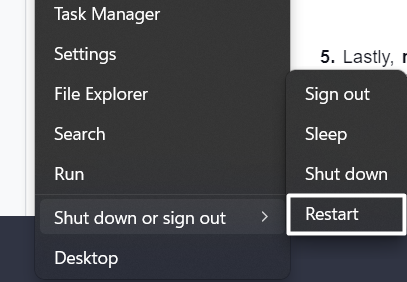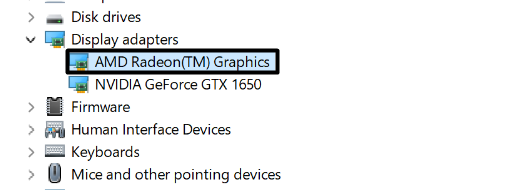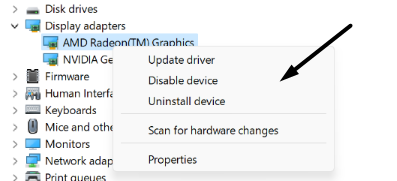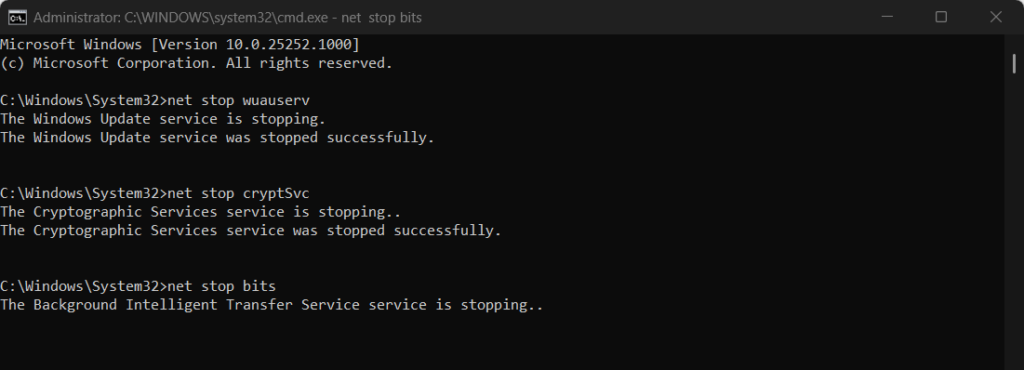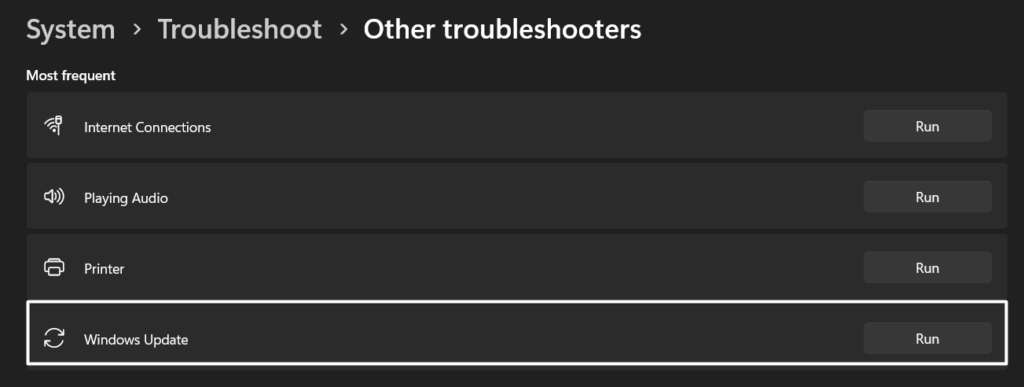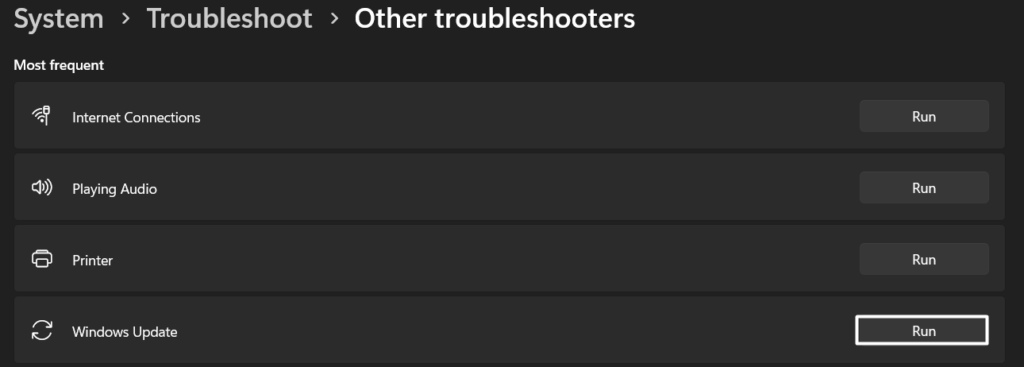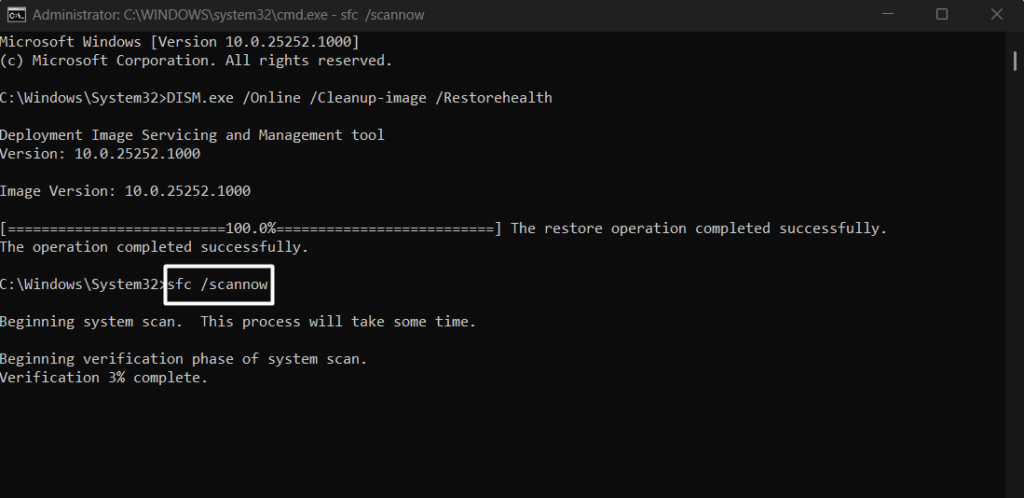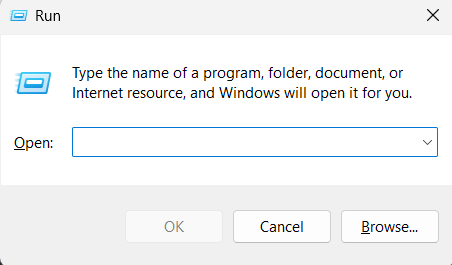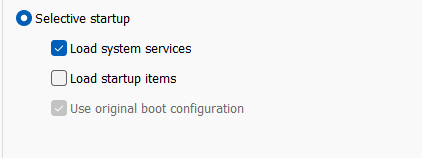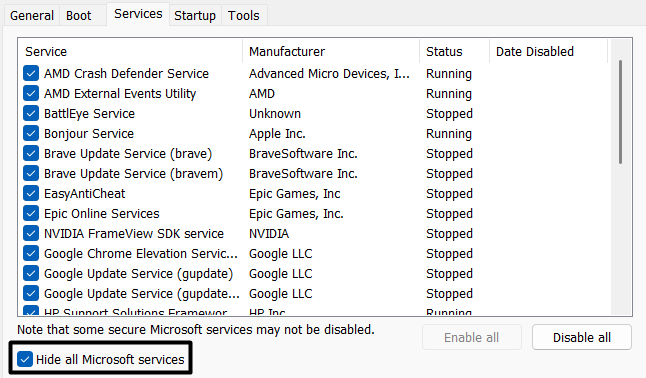A few users also mentioned that they aren’t able to upgrade their Windows 10 PC to the latest Windows 11 because of these errors. We researched a lot about these errors and can say that the errors list is a lot longer. Here, in this article, we’ve explained all Windows update and installation errors in detail. So, if you’re also getting the error while updating your PC, read this guide, learn more about it, and fix it effortlessly.
What Are the Causes Of Windows Upgrade and Installation Errors?
There are a lot of Windows upgrade and installation errors, but the causes of these errors are mostly the same. Here are some of the most common ones.
Multiple Updates in the Queue Lack of Drive Space Corrupted Update Files Hardware Conflicts Outdated or Malfunctioned Drivers Enabled VPN Third-Party Antivirus Software Incompatible Apps Hard Drive Errors
Windows Upgrade and Installation Errors
During the research, we found that there are more than 15 Windows update and installation errors. Here in this article, we’ve tried to explain all the error codes in detail so that nothing is left. Let’s talk about these Windows upgrade and installation errors in detail.
1. 0xC1900101
There are multiple variations of 0xC1900101 errors, such as 0x2000C, 0x20017, 0x30018, 0x3000D, etc., and all these errors arise for the same cause. These errors occur when there’s an issue with the system drivers. It could be possible that some of your system drivers are outdated or corrupted. Fortunately, you can get rid of outdated and malfunctioned drivers by updating and reinstalling them on the system. You can check Fix #8 for a detailed explanation.
2. 0xc1900223
This error usually appears when the system faces problems in downloading and installing the selected Windows update. There’s no way to fix this error. You have to wait for the system to start the update process again.
3. 0xC1900208 – 0x4000C
The 0xC1900208 error has different variants, and all occur for varied reasons. But most users face the 0xC1900208 – 0x4000C error while installing the new Windows updates. This error appears when incompatible software stops the update process from completing. If you’ve got this error, then it means an app is trying to block the system from installing the update.
4. 0xC1900107
You might get this error if a cleanup process from a previous installation attempt is already in process or pending. This error can also arise when a system restart is needed to continue the upgrade process. So, the solutions are already clear to you. You have to first wait for the previous cleanup operation to complete and then have to restart the PC.
5. 0x80073712
The 0x80073712 error appears when the Windows Update doesn’t find an essential file that’s required to finish the Windows installation process. It could be possible that the file is either missing or corrupted. You can get all the missing and corrupted files back on the system by executing a DISM command in the Command Prompt. Refer to Fix #12 to know the fix for this error.
6. 0xC1900200 – 0x20008
The 0xC1900200 – 0x20008 error appears when the system doesn’t meet the minimum requirements to install the upgrade to Windows 11. If you face this error, you’ve to make sure that your PC can run the latest Windows 11 easily. Some users also face the 0xC1900202 – 0x20008, which also appears for the same reason.
7. 0x800F0923
You might get this error when a driver or program on your system isn’t capable with the new Windows 11. Unfortunately, there’s no way to fix this error. You must always ensure that all your system components can work with Windows 11.
8. 0x80200056
The 0x80200056 error arises when you try to interrupt the Windows update process by restarting the PC. This error can also appear when you sign out of the PC while updating the PC. So, if you get this error, you know what to do.
9. 0x800F0922
The 0x800F0922 error appears when the system can’t connect with Windows Update servers to download and install new updates. It’s found that using VPN software can cause this issue. If you’re using a VPN, consider disabling it while updating Windows. But this error can also appear when the system-reserved partition is completely full and Windows needs more space to install the new updates.
10. Error: We Couldn’t Complete the Updates. Undoing Changes. Don’t Turn Off Your Computer
You might get this long error message when the system faces issues downloading and installing Windows updates. There could be varied reasons behind this failure, such as third-party antivirus, VPN, etc. You can find the exact cause of this error with the help of the error code mentioned at the end or the start of the failure message.
11. Error: The Update Isn’t Applicable to Your Computer.
As the error message suggests, you get this error when your PC doesn’t have the required updates installed. Some Windows updates only work when other updates are installed on the system. This is the reason it’s important to ensure that your PC has all the previous updates installed.
12. 0x80070070 – 0x50011
The 0x80070070 – 0x50011 error appears when the system doesn’t have enough space to install the new Windows 11 or its updates. 0x80070070 – 0x50012 and 0x80070070 – 0x60000 errors also occur for the same reason. Fortunately, these errors can be resolved by emptying some system storage. Check Fix #6 to learn more about this error in detail and the steps to fix it with ease.
13. 0x80070002 0x20009
You might get the 0x80070002 0x20009 error when the system doesn’t find a specific file on the system’s storage to continue the update process. To fix this error, remove the additional disks on which Windows 11 isn’t installed. Once done, try to update the PC again.
14. 0x80300024
The 0x80300024 error arises when the target disk, partition, or volume can’t perform a specified disk operation, which is necessary to upgrade the PC to the new edition. Thus, it’s always important to make sure that your system meets the minimum requirements before installing the new edition of Windows. You can check the system requirements to install the latest Windows 11 by clicking here.
15. 0xC1900101 0x20017
You might get the 0xC1900101 0x20017 error when a system driver interferes with the Windows Update components. We already discussed this error code at the start of this section. This error can be fixed by simply updating and reinstalling the outdated and corrupted drivers.
16. 0xC1900101 0x30017
If you get this error, it means the third-party antivirus is interrupting Windows Update components and stopping them from updating the system. It also arises when the hardware or peripheral devices, like external drives, conflict with the system’s update drivers and cause this issue. You can easily eliminate this error by disconnecting all the external devices, like storage drives, docks, etc., from the system.
17. 0x8007042B 0x4000D
You get this error when another process is already running in the background, which is why the system can’t be upgraded to the latest version. This issue can be caused by an app or a service running in the background. The best way to determine this is to start the PC without third-party startup programs. We’ve explained the entire process of clean booting the Windows 11 PC in Fix #14. If this doesn’t work, follow other workarounds mentioned in the guide. So, this was a short introduction to some of the most common Windows upgrade and installation errors in Windows 11. Let’s move ahead and check some fixes to fix these errors.
Fix Windows Upgrade and Installation Errors in Windows 11
As mentioned above, there are more than 15 Windows Upgrade and Installation Errors in Windows 11, and all arise for different reasons. But the fixes for all these errors are kind of the same. Here in this section, we’ve listed all possible solutions that can help you easily get rid of the error you’re currently facing.
1. Make Sure Your PC Meets the Minimum Update Requirements
Before upgrading your system to Windows 11, you have to make sure that your PC is capable of running the latest Windows 11. If you aren’t sure whether your system can run Windows 11 or not, you can click here and check the Windows 11 minimum PC requirements. In case your Windows PC doesn’t meet the minimum system requirements for installing Windows 11, then you can’t install the new Windows 11 on your PC.
2. Turn Off VPN
It’s possible that your system is unable to connect with the Windows Update servers, because of which you’re unable to update your system and getting errors. This usually happens when you use VPN services. It’s found that VPN slows down the internet speed and increases latency. When your PC is connected to a VPN, the internet goes through multiple VPN servers, which eventually decreases the internet speed. So, if you’re using a VPN at the time of updating the system, disable it to avoid this issue. Otherwise, the issue will keep appearing.
3. Unplug Extra Hardware
Some update and installation errors arise when external hardware devices, like storage drives, docks, etc., interfere with the Windows update component and process. If you’ve connected any external devices to your system, you can disconnect all of them for a while and see if this fixes the issue. You don’t need to remove devices like a mouse, keyboard, or anything that helps in basic functioning. So, try this and check if it works for you.
4. Disable (or Remove) Third-Party Antivirus Software
According to Microsoft, third-party antivirus software, like Avast, McAfee, etc., can also interfere with the Windows update servers. So, if you’re using an antivirus, we suggest you disable it and then try again to update your system. You can disable all the security shields from the system tray or remove the program from the system. So, remove the third-party antivirus from your system by following the below-mentioned steps:
- Open the Run program using the Windows + R keyboard combination and type appwiz.cpl in the Run program’s search box.
- Once the Programs & Features window is opened, select the antivirus program you want to uninstall from the PC.
- Now, right-click on the antivirus program and select Uninstall from the context menu to remove the program from the system. Once the third-party antivirus program is uninstalled from the system, open the Windows Update section in the Settings app and try updating the PC again.
5. Uninstall Incompatible Apps From the System
Errors like 0xC1900208 – 0x4000C arise when an incompatible app or software hinders the update process. It’s pretty difficult to find the actual culprits. So, you can remove all the old or nonessential apps from the system. In the previous fix, we mentioned the steps to delete a program from a Windows 11 PC.
6. Free Up Drive Space With Disk Cleanup Tool
Windows update errors also appear when your PC is low on storage. Before installing the new updates, you should always ensure that your system has enough disk space to install the new updates and programs. You can check the storage usage in the Settings app with ease. If your system has very little storage, you can free up some storage using the built-in Disk Cleanup utility. You can follow the mentioned steps to release some system storage with the Disk Cleanup tool:
- To start, open the Windows Search Box by pressing the Windows key on your keyboard and typing Disk Cleanup in it.
- Now, select the Disk Cleanup tool from the Best match section to open the Disk Cleanup utility on the system.
- Now, check the mentioned checkboxes, and click on the Cleanup system files to delete all the selected files from the system to free up some storage.
Downloaded Program Files Temporary Internet Files Recycle Bin Delivery Optimization Files Temporary Files Thumbnails
Once the data is removed from the system, reboot the system and try to update your Windows 11 PC again.
7. Increase the Size of the System Reserved Partition
When you download and install the new updates, they get stored directly in the System Reserved Partition. As you install new updates and programs, the storage keeps filling up. It could be possible that your PC’s System Reserved Partition is fully occupied, which is why the system is unable to install the update, and you’re facing this issue. In that case, you can take the help of an external disk management tool and extend the System Reserved Partition. We suggest checking this troubleshooting guide to learn more about System Reserved Partition and how to optimize it properly.
8. Fix the Malfunctioned Drivers
A few upgrade and installation errors, like 0xC1900101 0x30017, appear because of malfunctioned or outdated system drivers. This could be the same in your case. But it’s very difficult and time-consuming to manually check each driver and determine whether the driver is corrupted or outdated. To trim the process, you can look for the drivers with a yellow exclamation mark beside them in the Device Manager and re-enable them. Doing this will make the drivers work again perfectly. Fret not! We’ve explained the whole process in the below-mentioned steps:
- To start, open the Windows Search Box, type Device Manager, and select Device Manager from the Best match section.
- In the Device Manager, search for the drivers with an exclamation mark and right-click on it to open the context menu.
- Now, select the Disable device option from the context menu and then re-enable it by clicking on the Enable device option in the menu. Once all the malfunctioned drivers are re-enabled, restart your PC, and try to update the PC again. If you’re still not able to update your Windows PC, select the Update device option from the context menu to update the drivers.
9. Restart Windows Update Service by CMD
If you’re still unable to update your Windows 11 PC, then the Windows Update services aren’t working properly. In that case, you can try to restart the Windows Update services by executing a few simple commands in the Command Prompt app to see if the issue is fixed. Follow the below-mentioned steps to restart the Windows Update services:
- First, open the Run program, type CMD in the Run dialogue’s search box, and press the Ctrl + Shift + Esc to open the Command Prompt program with admin rights.
- Once the console is launched, execute the below-mentioned commands in the console in one go and press the Enter key on your keyboard: Once the process is completed, restart the computer and check if you can now update your Windows system to the latest version without any errors.
10. Reset Windows Update Components
If restarting the Windows Update component doesn’t fix the issue, you can try resetting them. Doing this will delete all the cached data of the Windows Update components from the system and ensure all the issues with the components have been fixed. You can follow the mentioned steps to reset the Windows Update components:
- Open the Terminal app on your Windows 11 PC, click on the Dropdown arrow next to the Plus sign in the top menu, and select the Command Prompt option.
- Now, copy-paste the below-mentioned commands one by one in the Command Prompt app to stop all the Windows Update components:
- You need to first rename the SoftwareDistribution folder by executing the below-mentioned command in the same console window:
- Once the SoftwareDistribution folder is renamed, rename the catroot2 folder by typing the mentioned command in the console:
- Lastly, restart all the update services that you stopped at the beginning of the process (Step 2) by executing the below-mentioned commands: After resetting the Windows Update components and clearing all their existing data, reboot your Windows PC and check if the issue is resolved. You can move to Settings > Windows Update > Check for updates to scan and install new updates.
11. Use the Windows Update Troubleshooter
Windows has many integrated troubleshooters, one of which is the Windows Update troubleshooter. It can help you find and fix all the problems with your system’s update components and services automatically in a few seconds. So, use the Windows Update troubleshooter and see if it fixes the issue. Follow the below-mentioned steps to do the same:
- Open the Settings app on your Windows PC using the Windows + I keyboard shortcut and move to the Troubleshoot section.
- In the Troubleshoot section, click on Other troubleshooters and search for Windows Update in the Most frequent section.
- Now, click on Run next to the Windows Update and wait for the troubleshooter to scan all the Windows update components for the problems and fix them.
- If the troubleshooter finds issues with the components, you’ll see them in the dialogue box. Sometimes the troubleshooter resolves the issues automatically. But sometimes, you need to fix them manually. If it doesn’t find any problem, you’ll get a message stating, “Troubleshooting couldn’t identify a problem.”
12. Repair Hard-Drive Errors & Corrupted Files
Windows update and installation errors also arise because of corrupted system files and errors in the storage drive. Fortunately, Windows has a built-in tool to repair malfunctioned files and hard drive errors with ease. You have to first execute the DISM command to repair the hard drive errors. And then, you need to run the SFC scan to fix all the corrupted system files. Follow the below-mentioned steps to know the exact process:
- Open the Run dialog, type CMD in the Run dialog’s search box, and then press the Ctrl + Shift + Esc key to open CMD with admin privileges.
- Next, execute the Deployment Image Servicing command in the console and press the Enter key:
- Once the DISM scan is completed, execute the SFC command in the Command Prompt to start the System File Checker scan to find and fix corrupted system files: Once both system scans are completed, restart the system and try updating the PC again. We hope the issue is resolved now.
13. Clean Boot Windows
When you start your system, a few programs, like Microsoft OneDrive, also start automatically. This is because you’ve allowed them to start as soon as the system starts. It could be possible that programs like Microsoft OneDrive are interfering with the Windows update process and leading to this issue. To determine this, you can try restarting the system without additional startup programs. In short, you have to clean boot your Windows 11 PC. It’s pretty easy, and the below-mentioned steps explain the same with ease:
- Press the Windows key on your keyboard to open the Windows Search Box and type Run in the search box.
- Next, type msconfig in the Run’s search box and press the Enter key to open the System Configuration tab.
- In the System Configuration section, select the Selective startup radio button and then deselect the Load startup items option.
- Then, navigate to the Services section, check the Hide all Microsoft services, then deselect all the non-Microsoft services, and click on Disable all.
- Now, click on OK and then click on Apply to save all the recently made changes to the Windows system. Once done, move to Settings > Windows Update, scan for new updates and install them.
14. Reset Your Windows 11 PC
If none of the above-mentioned solutions fix these irritating issues, then the last option is to reset the entire system. We assure resetting the PC will indeed fix the issue. But for that, you need to reset the whole PC, including personal files, apps, and settings. If you’re sure about it, follow the below-mentioned steps to immediately reset your PC and fix the error:
- Open the Settings app on your Windows 11 PC and navigate to the Recovery section.
- Now, click on Reset PC next to Reset this PC in the Recovery options section to proceed ahead.
- In the end, select the Remove everything option to delete all your personal files, apps, and settings data from the PC. You should now be able to install new updates on your Windows 11 PC without such errors. Even if resetting the PC doesn’t fix the issue, you can consider contacting Microsoft customer support for further assistance. They’ll definitely provide you with a working solution, as they’re the real experts.
How Do I Fix Windows Update Errors?
If you’ve got an update error while updating the system, you can try uninstalling the incompatible apps or drivers from your Windows PC. In case this doesn’t resolve the issue, then we suggest you reset the PC, along with personal files. This will surely eliminate the Windows update error with ease.
Why Does Windows Update Fail To Install?
One of the most common reasons behind the inability to update the PC is outdated or malfunctioned system drivers. You can use the Windows Update Troubleshooter to search for problems with Windows Update components and fix them with ease. If this doesn’t work, consider updating the core system drivers from Device Manager.
How Do I Restart Windows Installer Service?
Follow the below-mentioned steps to restart the Windows Installer service in Windows 11:
How Do I Force a Windows Update To Install?
To manually install an update on your Windows 11 PC, open the Settings app and move to the Windows Update section from the left navigation menu. Now, click on Check for updates to search for new Windows 11 updates. If the system shows some pending updates on the screen, click on the Download and Install option to install them on the system.
How Do I Fix an Update That Won’t Install?
If you’re unable to install new updates on your Windows 11 PC, then it could be possible that your PC doesn’t have enough space to install them. If that’s the case, you can use the integrated Disk Cleanup utility to free up system storage. You can also try updating and reinstalling the malfunctioned drivers if this doesn’t work.
Update Your Windows 11 PC Now Without Any Errors
There could be varied causes of the Windows upgrade and installation errors. But, no matter what the reason is, it’s pretty easy to fix these update and installation errors. In this guide, we not only shared some working workarounds to fix these errors. But we also discussed all Windows updates and installation errors in detail. We hope this guide helped you in some way or another. Before saying goodbye, make sure to share which error you faced while installing the new Windows updates on your system. So, goodbye for now.
